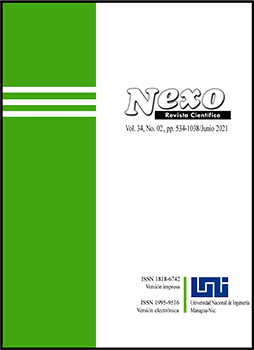Emoji captcha; una novedosa opción para proteger sitios web
DOI:
https://doi.org/10.5377/nexo.v34i02.11545Palabras clave:
Emoji, GIF, SeguridadResumen
En el presente trabajo se presenta un desarrollo de una variante de captcha con el uso de una imagen gif, compuesta por 6 fotogramas; cada fotograma está formado por 9 imágenes ordenadas en una matriz de 3 por 3; cada imagen utilizada expresa una emoción de un conjunto de 5 emociones básicas. Cada uno de los 9 sectores en los que se divide el gif, tiene asignado una marca dígito, con el propósito de que el usuario reconozca una emoción dentro del gif y utilizando sus habilidades cognitivas relacione esta emoción con un número y, de esta forma identifique la respuesta correcta. Se propone una alternativa simple y segura para la protección de sitios web, ideal para un amplio rango de usuarios, sin importar su edad o conocimientos informáticos, esto se debe al uso de emociones que son reconocidas por todo ser humano. Los desarrollos actuales realizan análisis de trafico de red y tiempo de respuesta para identificar si el usuario es humano o un programa malicioso, permitiendo a los atacantes acceder a otro tipo de información de usuario de una manera más simple, la ventaja de esta propuesta proviene del hecho de la regeneración del captcha y la redistribución de los números identificadores cada 2 minutos, reforzados por una serie de distorsiones aplicadas, de esta forma los atacantes no pueden acceder a información extra del usuario y debido al tiempo de regeneración lo hace inviable para él.
Descargas
875
Descargas
Publicado
Cómo citar
Número
Sección
Licencia
Derechos de autor 2021 Universidad Nacional de Ingeniería

Esta obra está bajo una licencia internacional Creative Commons Atribución 4.0.
Los autores que publican en Nexo Revista Científica están de acuerdo con los siguientes términos:
- Los autores conservan los derechos de autor y conceden a la revista el derecho de la primera publicación bajo la licencia Creative Commons Attribution License, que permite a otros compartir el trabajo con un reconocimiento a la autoría de la obra y a la publicación inicial en Nexo Revista Científica.
- Los autores pueden establecer por separado acuerdos adicionales para la distribución no exclusiva de la versión de la obra publicada en la revista (por ejemplo, en un repositorio institucional o en un libro) con el reconocimiento de su publicación inicial en Nexo Revista Científica.
- Se permite y se anima a los autores a difundir sus trabajos electrónicamente (por ejemplo, en repositorios institucionales o en su propio sitio web) antes y durante el proceso de envío, ya que puede dar lugar a intercambios productivos, así como a una citación más temprana y mayor de los trabajos publicados.










